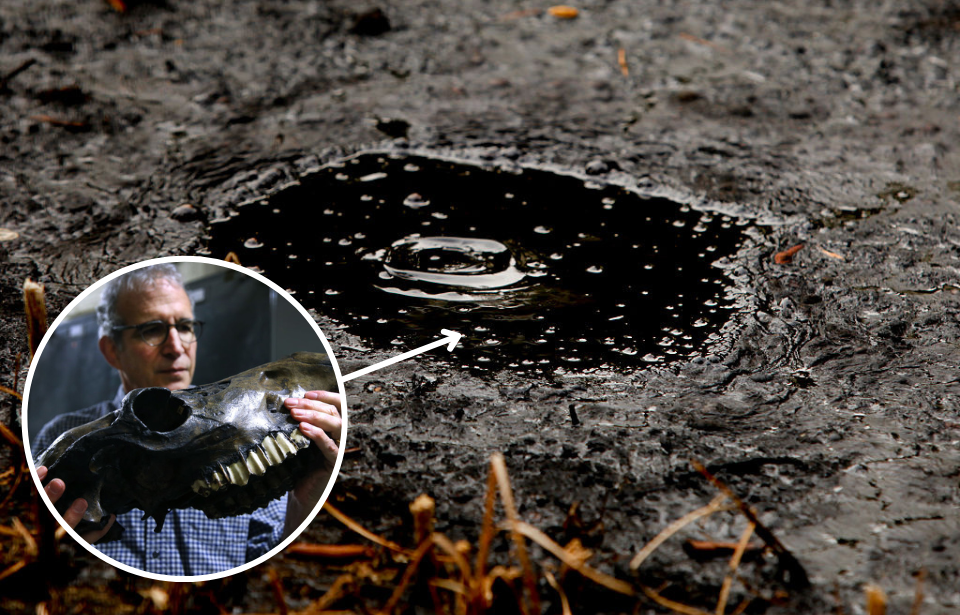Underneath layers of slick, black oil deposits in Los Angeles, California lie the key to unlocking the secrets of the Ice Age. The La Brea Tar Pits is one of the only active archeological sites in the world that can be found in the middle of a city. Here, scientists unearth new discoveries every day.
More than 100 excavations have been made at the Tar Pits since the early 1900s, revealing Ice Age relics dating back 50,000 years. From plants and insects to sloths and wooly mammoths, the mysterious black pits have more secrets waiting just below the surface.
What are the La Brea Tar Pits?
The La Brea Tar Pits are located in Hancock Park, Los Angeles. The pits are made up of heavy oil fractions known as gilsonite, which seeps out of the ground as oil. Below the surface of the Hancock Park area lies a large underground oil field known as the Salt Lake Oil Field, and as the oil rises to the surface it forms black pools of asphalt.
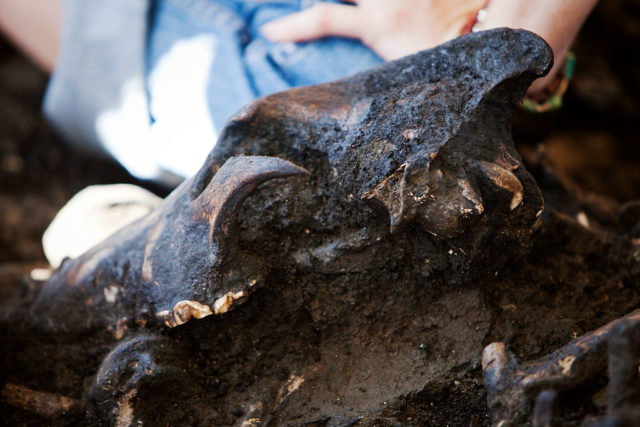
Even though a sprawling cityscape surrounds the pits, they have actually been around for tens of thousands of years. At times, the asphalt was so thick that unsuspecting animals who wandered into the pits would become trapped and die. Predators, looking for an easy meal, would also enter in and become stuck.
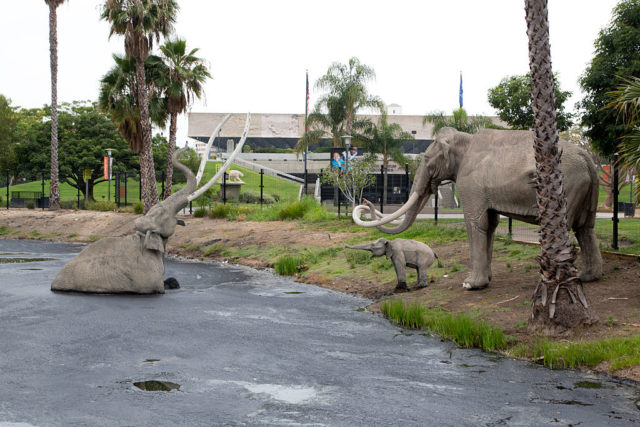
As the bones of the animals broke down and decomposed in the asphalt, the oil turns the bones a dark color. The remains get trapped in a solid substance formed when the petroleum evaporates from the asphalt, which also preserves “microfossils” – pieces of plants, insects, dust, and even pollen. The oldest bones and preserved matter found in the pits dates back 38,000 years ago.
Who discovered the La Brea fossils?
While explorers didn’t arrive in California until the 18th century, the Native American Chumash and Tongva people used the asphalt of the pits to build waterproof boats, unlike any other First Nation in North America. Spanish explorers first glimpsed the pits in 1769, and called them Los Volcanes de Brea or “Volcanoes of Tar,” but the Spanish name Brea has stuck around ever since.
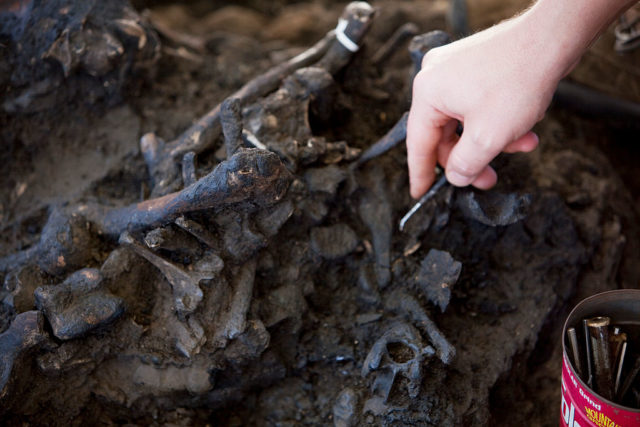
The first excavation of the pits began in 1886, but they were searching for asphalt to use in building and not for fossils. In 1901, Union Oil geologist W. W. Orcutt was the first to recognize that the animal bones found in the tar – long thought to be from local cows who had died in the asphalt – were in fact prehistoric fossils.
In 1913 scientists began excavating the ancient bones, which were remarkably well preserved given their age. At the same time George Allan Hancock – the owner of the land the pits were located on – granted the Natural History Museum of Los Angeles County exclusive excavation rights at the Tar Pits for two years.
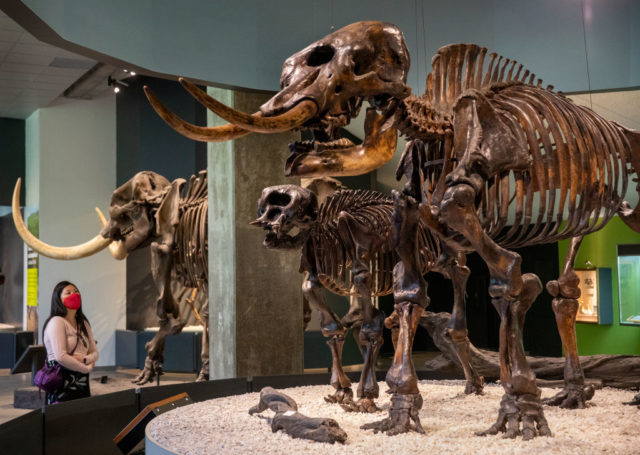
Despite the short timeframe, the museum found a whopping 750,000 specimens throughout 96 archeological sites. The collection was so extensive that officials agreed to ensure they would remain accessible for the public to view. The George C. Page Museum of La Brea Discoveries opened right next to the tar pits in Hancock Park in 1977 as a permanent place for the archeological specimens found at La Brea to reside.
Project 23: an even bigger breakthrough
In 2006, 16 fossil deposits were discovered in the ground surrounding the tar pits where construction of an underground parking garage was underway. Archeologists unearthed a treasure trove of Ice Age fossils, including remains of dire wolves, horses, bison, a saber-toothed cat, a giant ground sloth, turtles, mollusks, and an American lion.
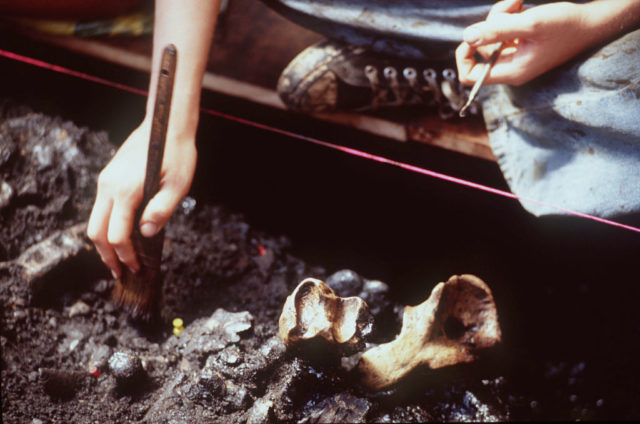
If that wasn’t enough, they also uncovered a nearly complete mammoth skeleton – but the top of its skull was broken off during the construction dig. Dubbed “Project 23,” the dig has helped to double the size of the La Brea fossil collection over the past decade.
Only the remains of one human have ever been found in the pits. Dubbed the “La Brea Woman,” her skull was found in 1914 and is believed to be over 10,000 years old. The woman was likely between the ages of 18 and 24 and died from a blow to the head.
Visiting an active archeological site
Today, you can see the La Brea Woman and other fossils found in the Tar Pits on display at the La Brea Tar Pits and Museum in Hancock Park, Los Angeles. Here you can visit two active archeological sites in the Pits: Project 23 and Pit 91, where visitors can look down into the asphalt pit as archeologists dig for new discoveries.
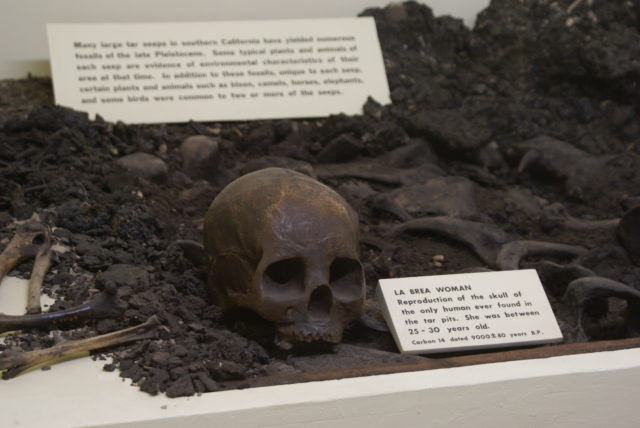
More from us: ‘Class Action Park’: The Rollercoaster-Ride Story of America’s Deadliest Attraction
Visitors can also tour life-sized replicas of Ice Age mammals on display in Hancock Park, or walk through an extensive museum full of the incredible La Brea fossil finds.
